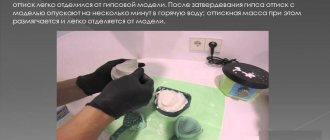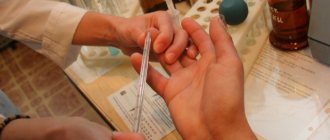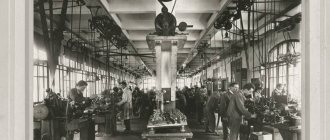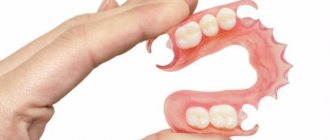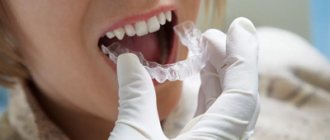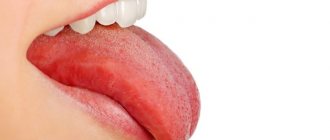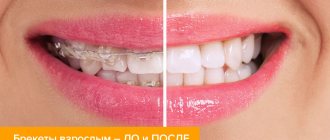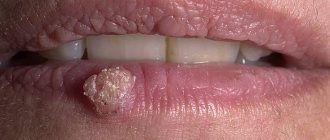All those who have had to deal, to one degree or another, with the problem of treating injuries and diseases that require immobilization (immobilization of limbs, joints) know how much trouble this method brings. For centuries, the material of choice for immobilization has been gypsum.
Of course, this material has a number of advantages necessary for the treatment of patients. Plaster is an inexpensive material; unhardened plaster is very plastic, which allows you to give the required shape to the bandage. Plaster immobilization is very simple to manufacture. But along with many positive qualities, gypsum immobilization has a number of significant disadvantages. First of all, in order for the bandage to have sufficient strength, it requires the application of many layers. This causes the bandage to become thick and heavy. With such a bandage it is difficult to move and even take care of yourself. In our dynamic age. When literally every minute counts for many people, an injury associated with the need to wear a cast becomes a real tragedy. After all, with a thick and heavy bandage it can be difficult to get to the kitchen and toilet, let alone to work.
The second, but no less important problem is related to the high hygroscopicity of gypsum. Gypsum easily absorbs and retains moisture for a long time, which is why it loses its hardness and rigidity. A bandage that accidentally falls under water immediately loses its medicinal meaning. And there is only one thing you can do with it - throw it away. This raises the problem of hygiene.
It is quite difficult to maintain basic hygiene principles with a plaster cast. It's hard to even wash your face. It is possible to take a shower only in parts, carefully wrapping the injured limb in plastic. You have to forget about the bathroom during treatment. At this time, dead epithelium accumulates under the bandage, the skin under the bandage sweats, and sometimes even an unpleasant odor occurs. Those who had to wear a plaster cast for a long time must remember how unsightly the limb looks immediately after the plaster is removed.
Gypsum is a material that, after drying, crumbles and stains clothes and bedding. On the bed of a victim who is in a cast, there are always plaster crumbs in abundance. And the bed itself looks untidy. When wearing immobilization for a long time, there is often a need for periodic dressing changes. The synthetic materials Scotchcast and Softcast do not have these disadvantages. Polymer immobilizing bandage - artificial plaster Scotchcast Plus Scotchcast Plus can completely replace a plaster cast in the treatment of fractures. The combination of the extraordinary strength of Scotchkast Plus and the lightness of the material (4-5 times lighter than gypsum) makes its use much more comfortable. The material is non-toxic and does not cause allergic reactions. It allows evaporation from the skin and oxygen from the outside (“breathes”), which prevents itching and maceration. The Scotchcast Plus artificial plaster bandage is not afraid of moisture, so the patient can take a shower.
Advantages of plastic gypsum compared to traditional
- Quick fix . You can change and fix the polymer bandage in 20-30 minutes at home.
- Simple modeling . The bandage takes on the required shape, making it suitable for fixing even hard-to-reach parts of the body and joints.
- Sturdy mount . The material ensures immobilization of the injured limb throughout the entire recovery period.
- Water resistance . The bandage can be wetted: take a full bath or shower, or swim.
- Safety . The product does not cause irritation, rashes, skin inflammation, or diaper rash.
- Bandwidth . It does not need to be removed to perform a control x-ray, computed tomography or magnetic resonance imaging.
- Wide selection of colors . The polymer bandage is available in different colors, which is especially important when applied to children.
Consult your doctor
Each type of polymer plaster is indicated for certain injuries and fractures. Only your attending physician can determine which one is right for you.
A plastic bandage does not cancel visits to the doctor and does not speed up the healing of broken bones, but allows you to make treatment as comfortable as possible.
In medical matters, traumatologist-orthopedist Natalya Vladimirovna Sokolenko will help you determine the type of polymer plaster that is right for you.
You can find out more detailed information or make an appointment by phone. +7 (4712) 46-03-03.
Application of plastic plaster
You can apply a plastic cast to an adult’s or child’s arm, leg, ankle, and other parts of the body at home. For this you will need:
- Polymer bandage . Can be of different hardness and type. The doctor must select the specific type and width of the product.
- Plaster lining . Can be stocking or rolled cotton wool. The first is used for injuries to the limbs. The second is in cases where a stocking lining cannot be used. A combination of them is allowed.
- Latex gloves . When applied, the impregnation of the dressing should not come into contact with the skin.
- Warm water . Temperature is about 20-25 degrees Celsius.
To fix synthetic plaster, you must adhere to the following algorithm:
- Put on gloves and remove the liner from the packaging. The hosiery must be put on the limb, cutting off the excess. The bandage pad should simply be wrapped around the injured area.
- Take a bowl of warm water and dip the polymer bandage into it. The roll of bandage must be squeezed 2-3 times without removing it from the water so that it absorbs moisture.
- Remove the medical polymer plaster from the water and apply it with smooth spiral movements to the arm, leg, collarbone or any other damaged part of the body. Each previous turn must be overlapped by about half the width of the next one.
After 3-5 minutes the plaster will be fixed. During this time, the material can be modeled. Under normal conditions, all-polymer materials will harden in 20-25 minutes.
Advantages of artificial plaster
Unlike classic plaster, plastic weighs several times less and does not interfere with movement. At the same time, the material is very durable, which guarantees proper healing of broken bones.
Modern plastic plaster is not afraid of water, you can safely swim with it both in the bath and in the sea, and if it gets dirty, you can simply wipe it with a damp cloth.
The porous structure of the material allows oxygen to pass freely, so the patient does not experience itching, irritation or other skin reactions. In addition, polymer fixatives are non-toxic and hypoallergenic.
Due to the elastic material, the plaster fits tightly to the site of injury, and at the same time allows you to simulate any shape for complex fractures.
During an x-ray, the plastic cast does not need to be removed; it does not block x-rays. The doctor can see all the details in the image, which means there will be no difficulties in assessing bone fusion.
The plastic plaster looks neat even after wearing it for a long time, and the patient feels it like a regular bandage and does not feel discomfort as when wearing a regular plaster.
This type of retainer is removed using a special saw and, due to its smooth texture, does not injure the skin and hair. This compares favorably with classic plaster, which, when worn for a long time, almost fuses with the skin.
Limb immobilization for injuries
Immobilization is the creation of immobility of a damaged or diseased part of the body; such immobilization contributes to faster and more proper restoration of tissues and organs. The need to immobilize a limb arises with such common mechanical injuries of the arms and legs as:
- stretching or rupture of the bursa-ligamentous apparatus;
- joint dislocation;
- crack and fracture of the bone.
At the moment, there are several methods of temporary and permanent fixation of damaged limbs, which can be divided into the following groups.
Plaster or orthosis: which is better to choose for a fracture?
Table of contents
- Indications for the use of gypsum
- Indications for using the orthosis
- What is better to choose for a fracture: plaster or orthosis
- Advantages of contacting MEDSI
Should I use a plaster or orthosis for fractures?
This question interests many today. Unfortunately, it is impossible to give a definite answer to this. Let's figure out why and find out what determines the choice in favor of one or another product.
Indications for the use of gypsum
Plaster casts are still widely used in traumatology. They are prescribed to adults and children. As an independent method of treatment, plaster bandages are indispensable for fresh fractures of the hands, forearm, foot, ankles, etc.
They are not used only for local infectious complications,
which include gangrene, ischemic limb disorders, purulent leaks, phlegmon and anaerobic infections.
It should be noted that today there are several varieties of gypsum. Polymer is increasingly replacing the traditional one. Instead of a cotton bandage, a special mesh impregnated with polyurethane resin is used. Such plaster can be made in the form of a bandage (activated by water) or blank sheets (activation occurs under the influence of temperature changes).
Polymer products:
- allow you to get a “breathable” bandage that allows air to pass through well
- stretch in different directions and allow you to get a fixator for any part of the body
- are distinguished by increased ease of use due to their relatively low weight
With modern dressings you can take a bath. It is enough just to dry the product with a hairdryer after hygiene procedures. In addition, polymer gypsum is more elastic. It reduces the risk of muscular dystrophy. The polymer is permeable to X-rays. This provides diagnostic capabilities.
Of course, modern plaster is not free. It is also important that its application is carried out using a special technology. Not every medical institution has staff who own it.
Which plaster is better for a fracture? Of course, polymer. But it should be borne in mind that it is not always available in emergency rooms.
Indications for using the orthosis
Wearing such a product allows you to stimulate bone healing and stabilize joints, reducing the load on the damaged area. In addition, modern designs help strengthen ligaments, muscles and tendons. Additionally, they minimize pain and reduce the risk of swelling.
Also indications for wearing it are:
- post-traumatic conditions
- arthritis and arthrosis of the joints
- problems with ligaments: weakness, congenital instability, acquired damage
- incorrect position of the feet (when the child turns his feet inward, walks on his toes, etc.)
The products are also recommended during the recovery phase after surgery.
What is better to choose for a fracture: plaster or orthosis
Only a doctor can give an exact answer to this question. However, there are certain standards.
Instead of a plaster cast, an orthosis is not prescribed for complex closed and open fractures, in the presence of bleeding wounds, or in the early stages of therapy. First, it is always better to apply the strongest bandage possible, which will ensure complete immobilization of the damaged area. Once the fusion process has started, you can remove it. Thus, orthoses are often used after casting.
At the same time, the use of a modern design will allow you to closely monitor the healing process. If necessary, the orthosis can be easily and quickly removed for X-ray or other diagnostics and a number of manipulations. The fixation of the structure can also be strengthened or weakened. This improves patient comfort.
Using an orthosis on the ankle and other parts of the legs or arms instead of a cast allows you to:
- for an overall reduction in recovery time
- to reduce the number of complications after various injuries
- to improve the general condition of the patient
Important! For fractures, both rigid and semi-rigid structures can be used. The choice in favor of a certain one is made exclusively by the doctor. You can choose a modern medical product exactly in size and taking into account all available indications. It is very important that the orthosis is used by the patient correctly, in compliance with all recommendations. Only in this case will the process of rehabilitation after a fracture be as painless as possible and require a minimum amount of time.
Advantages of contacting MEDSI
- Fast recovery with minimal discomfort.
This is achieved through the use of ankle and other orthoses instead of plaster. Also, modern designs maintain normal blood supply to tissues and are lightweight, resistant to moisture and easy to use. - Experienced doctors.
Our orthopedic traumatologists always take into account the patient’s indications and characteristics when selecting therapy. This allows you to achieve its pronounced effect - Comfort of visiting MEDSI.
Our clinics are located near the metro. Appointments must be made in advance. This allows you to avoid queues and long waits
To get help with fractures, use all the necessary services and ask questions about the conditions for their provision, call + 7 (495) 7-800-500. Our specialist will advise you and suggest the optimal time to visit the clinic. Recording is also possible through the SmartMed application.
Plaster and plaster bandages
The most classic example of a fixing material is gypsum. This powder, mixed with liquid, is applied in a circular manner to the injured area, hardens and takes shape, making the limb immobile.
Medical plaster bandage is a more advanced form of fixation, which consists of strips of gauze impregnated with plaster mass. The plaster is evenly distributed over the gauze and secured with a special bacteriostatic agent. To apply, the plaster bandage is pre-moistened and only then applied to the injured area, where it is smoothed and hardened. Additionally, such a retainer can be secured with an elastic or gauze bandage.
Plaster and plaster bandages are most often used in trauma departments for bone fractures, soft tissue injuries, joint diseases, etc.
Pros and cons of orthosis
The advantages of all types of orthoses are:
- Light weight. They are much lighter than plaster casts.
- Aesthetics: orthoses look neat, not bulky, and can be covered with clothing.
- Strength. Modern materials are resistant to moisture, corrosion, mechanical stress, they do not tear, practically do not break, providing reliable protection for the damaged part of the body.
- Moisture resistance. Plastic orthoses do not get wet, and fabric pads can be dried with a hairdryer. The fixing properties are not reduced.
- Comfort. Wearing orthoses instead of a cast is much more comfortable. There is a lining under the plastic or fiberglass that provides a soft fit and free air exchange. The orthosis is fixed on the limb with straps; there are special pads for the bones. Everything is provided to ensure that the medical device does not chafe.
- Removable, adjustable and re-fixable. The patient can remove and put on the orthosis himself without the help of others. This gives freedom of movement and activity is not limited.
The only disadvantage is the high cost. But taking into account the fact that recovery with orthoses is faster and rehabilitation is not required, as after wearing a cast, the price is justified.
Medical plaster "VOLMA", Russia
White medical gypsum “Volma” is used for medical purposes in stationary conditions for the manufacture of temporary prostheses, dummy casts and immobilizing bandages. Method of application: Medical plaster - gradually pour into water until a mass of creamy consistency is obtained. The consumption of water and binder depends on the application. When mixed with water, the binder does not emit any odor. The solution reaction is neutral. When making plaster casts, after 24 hours, the bandage has no signs of softening (sweating) or dents when pressed with fingers. Technical characteristics, medical plaster:
Composition - calcium sulfate β-hemihydrate Color - white Volumetric weight - 650 kg/cubic meter Residue on 0.2 mm sieve - 1-1.5% Water consumption - 0.6-0.65 l/kg Finished mass - pH 7 Setting time: start - no earlier than 5 minutes. end - no later than 12 minutes. Compressive strength after 2 hours no less than 5.0 MPa Flexural strength after 2 hours no less than 2.5 MPa When mixing with water there is no smell of hydrogen sulfide. When setting after 24 hours, there is no softening (sweating) in the plaster cast. Guaranteed shelf life in original packaging in dry rooms is 12 months from the date of manufacture. Method of application: Gypsum is gradually poured into water based on a proportion of 0.6-0.65 liters per 1 kg, while simultaneously stirring to obtain a mass of creamy consistency. After 1-1.5 minutes the mass is ready for work. Use the prepared mass within 5 minutes after preparation. The prepared solution is odorless. The solution reaction is neutral. When making plaster casts, after 24 hours the bandage has no signs of softening (sweating) or dents when pressed with fingers.
Packaging, medical plaster: 25 kg bag. (beta - modification, class 2, grade G-5), Russia Medical plaster "Volma" price: 20.25 rub. / kg (25 kg bag: 506.25 rubles) To buy medical gypsum "Volma" , you can call us by phone or send a request by e-mail to our managers in the contacts section. Also purchased with this product:
- Polyurethane bandage (synthetic) | Russia, South Korea)
Related products:
- Universal stocking
- Mineral wool
- Knife for plaster casts NL 180x45 (Esmarch Knife)
- Scissors for cutting plaster casts
